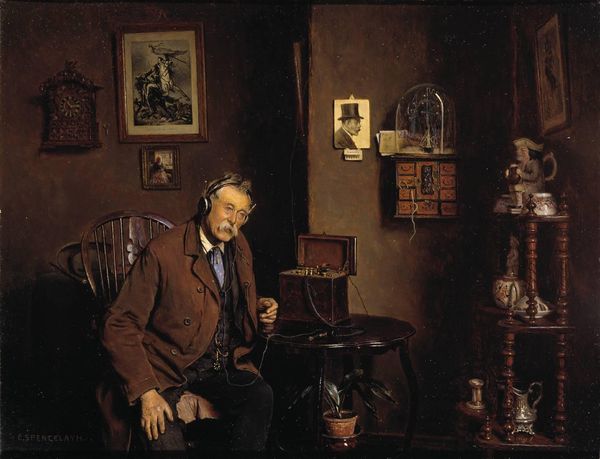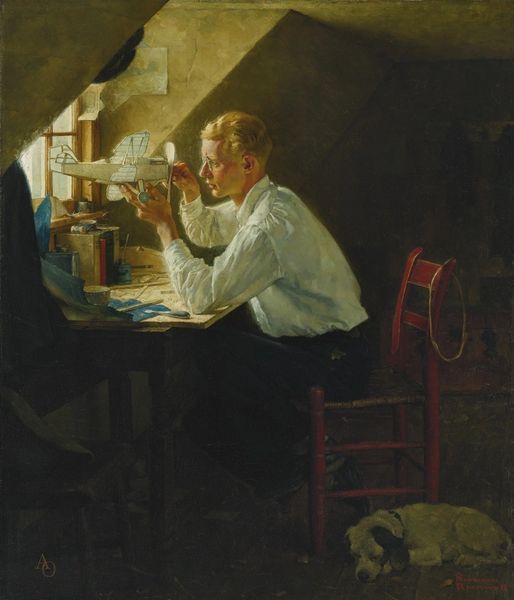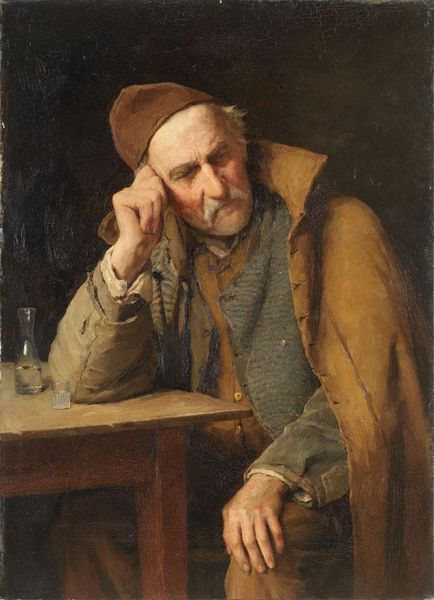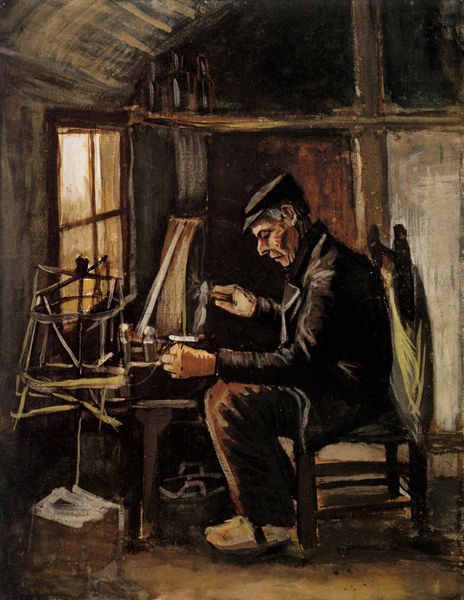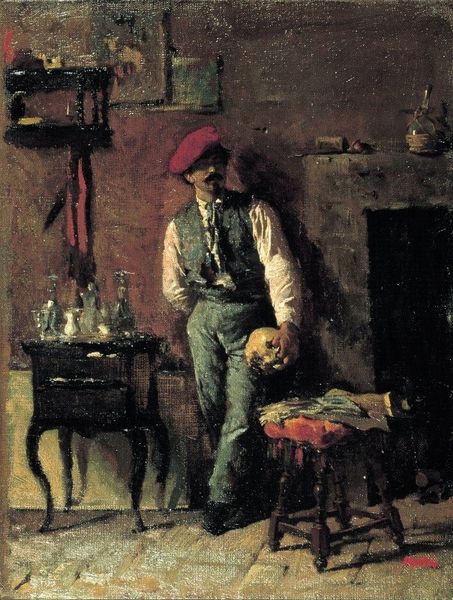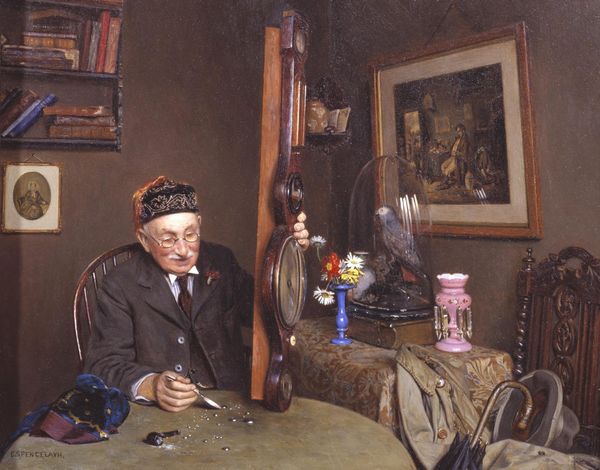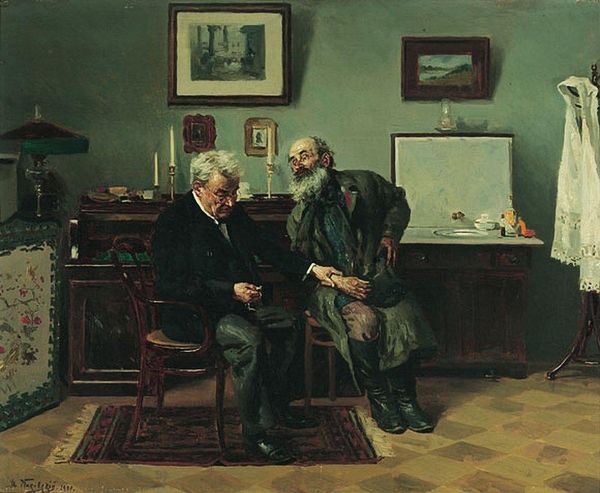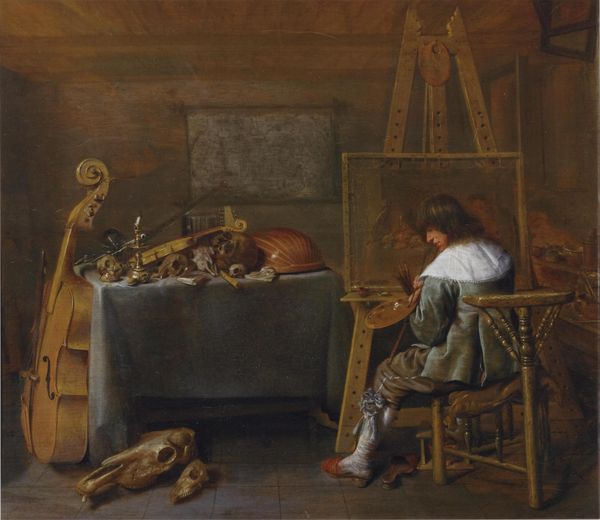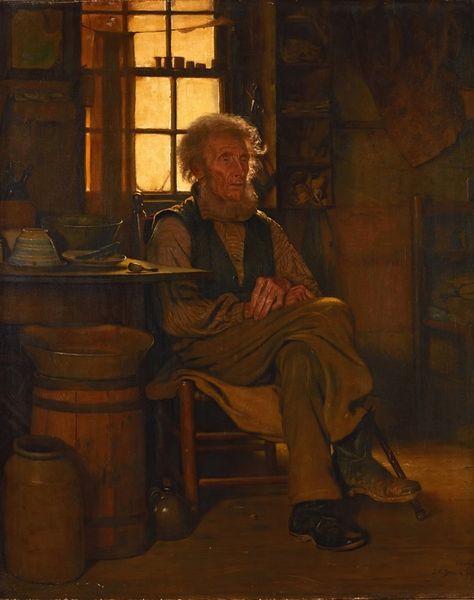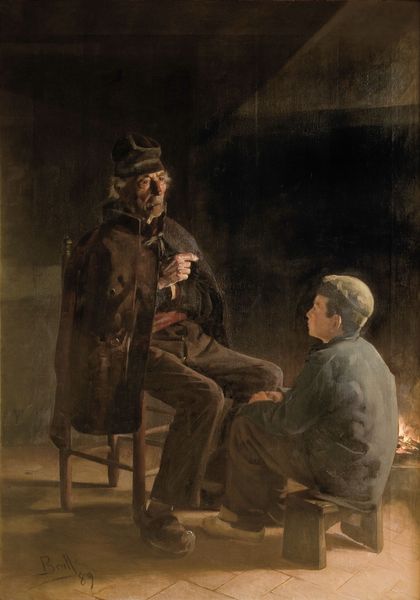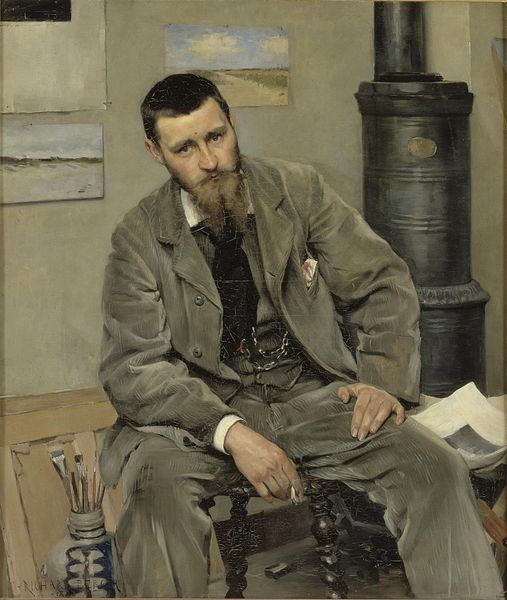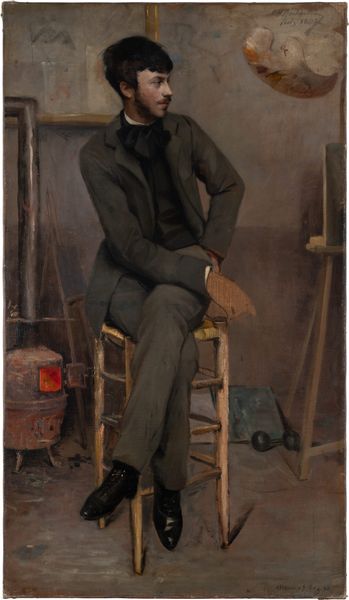
Dimensions: support: 498 x 382 x 15 mm
Copyright: © Tate | CC-BY-NC-ND 4.0 DEED, Photo: Tate
Curator: Here we have Charles Spencelayh’s, *War or No War, Who Cares?*. The artist painted this work on a panel measuring approximately 50 by 40 centimeters. What is your first impression? Editor: The overwhelming feeling is one of weary resignation. The palette is muted, almost monochromatic, and the figure seems entirely self-contained. Curator: The artist’s realism is striking; note the meticulous attention to detail in the textures—the worn leather of the boots, the rough weave of the rug. Spencelayh masterfully renders the material reality of his subject’s world. Editor: But isn’t that detachment from global conflict a privilege? The painting’s title feels almost flippant in the face of widespread suffering. The man’s complacency could be interpreted as a critique of societal indifference. Curator: Or perhaps, it's a recognition of the individual's limited power against larger forces. Editor: I see it more as a commentary on the societal structures that allow some to remain untouched by the turmoil that engulfs others. Food for thought, indeed. Curator: Absolutely. It demonstrates the power of art to evoke complex and contradictory responses.
Comments
tate 7 months ago
⋮
http://www.tate.org.uk/art/artworks/spencelayh-war-or-no-war-who-cares-t07730
Join the conversation
Join millions of artists and users on Artera today and experience the ultimate creative platform.
tate 7 months ago
⋮
In 1957, one year before Spencelayh's death at the age of ninety three, the critic of The Manchester Guardian remarked of his paintings, 'Most of them depict old codgers - the obsolete slang rises unbidden - in junk-crammed interiors that will be of considerable interest to the social historian of the future' (quoted in Noakes, p.53). Spencelayh travelled from his home in Rochester to the South Kensington School (later renamed the Royal College of Art) each day throughout his training as an artist. He continued his studies in Paris before returning to England, first exhibiting at the Royal Academy in 1892. For the next sixty-six years, Spencelayh regularly sent canvases to the Royal Academy exhibitions. War or no war, who cares? is one of a number of wartime paintings by Spencelayh with patriotic titles, including They'll Always be an England (exh. RA 1940) and Why War? (1939). The latter, depicting a gentleman contemplating the newspaper headline during the Munich crisis, appeared in newspaper and magazines all over the world after it had been exhibited at the Royal Academy. War or no war, who cares?, exhibited at the Royal Academy in 1945, depicts an old man dressed in gardening clothes, the newspaper on the table presumably reporting the recent events of the war. Spencelayh's humorous recreation of the life of a working man would have endorsed the stoicism of ordinary people at a time when the war had already continued for five years, but had made little difference to the old man whose solitary life is evident from his possessions. The crowded interior containing a clock, stuffed animal, painting, and gardening fork is characteristic of many of Spencelayh's paintings. His son Vernon recounted: 'in his studio he would build on frames the room, sometimes even wall-papers, and hang the walls with what one could expect in a cottage of that date. He had rooms full of such junk' (quoted in Noakes, p.29). Spencelayh's early training as a miniature painter is evident from the highly detailed technique of the painting, a skill which earned him the label 'the Human Camera' by his contemporaries (quoted in Noakes, p.37). Spencelayh began his career in an age when meticulously painted narrative subjects were popular both among artists and the exhibition going public. The movement towards Impressionism at the end of the nineteenth century went unnoticed by Spencelayh who continued to paint genre subjects on a small scale throughout his career. He continued, however, to be supported by several influential collectors and patrons, including the wealthy Mancunian cotton merchant, Mr Levy, and Queen Mary. His paintings, dense with old-fashioned bric-a-bràc and comments about suburban society, have frequently been described as Dickensian. Both Spencelayh and Dickens were born in Rochester, frequently returning to the cathedral city throughout their careers. In his obituary in The Times the critic remarked 'His work was full of the spirit, of The Old Curiosity Shop in particular … he had a natural sympathy for the kind of man who keeps one - an old bachelor in his conception'. Further reading:Noakes, Aubrey, Charles Spencelayh and his Paintings, London 1978 Heather Birchall June 2002
